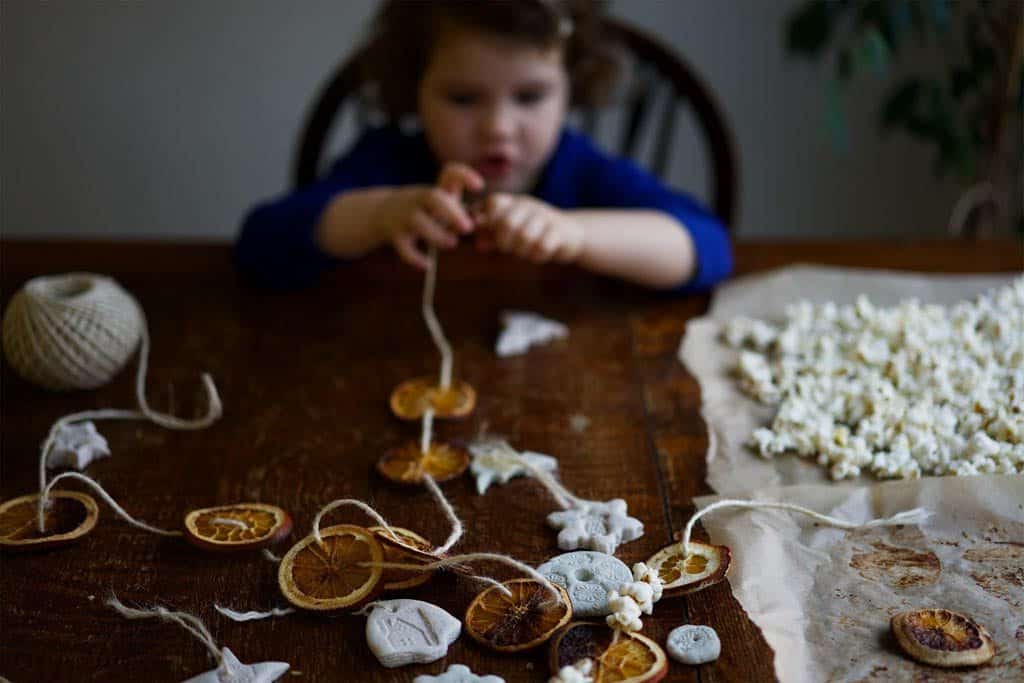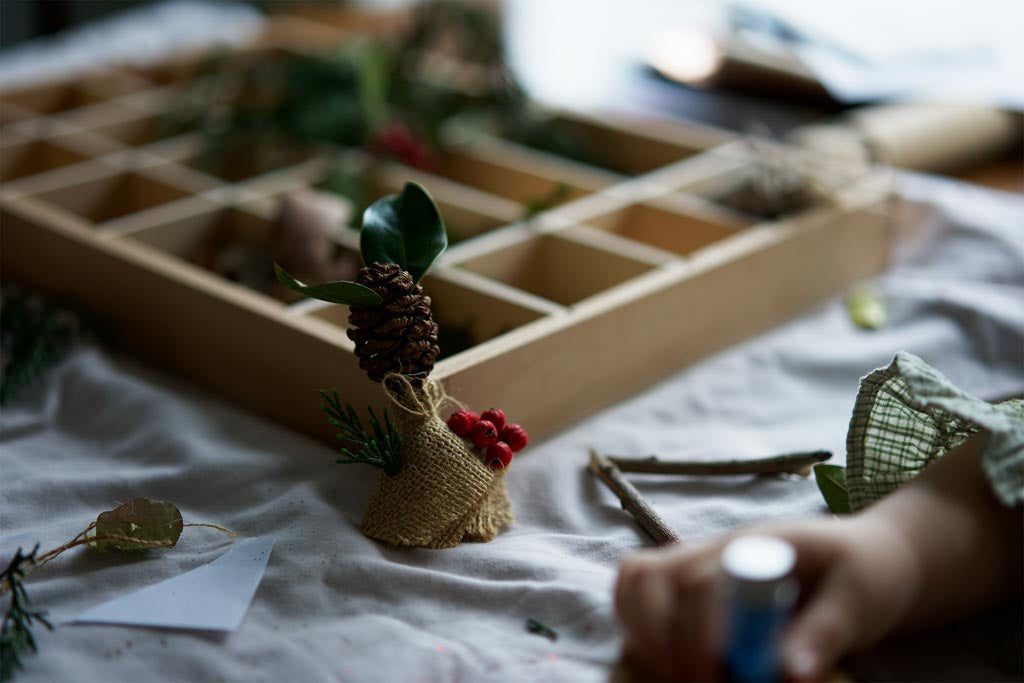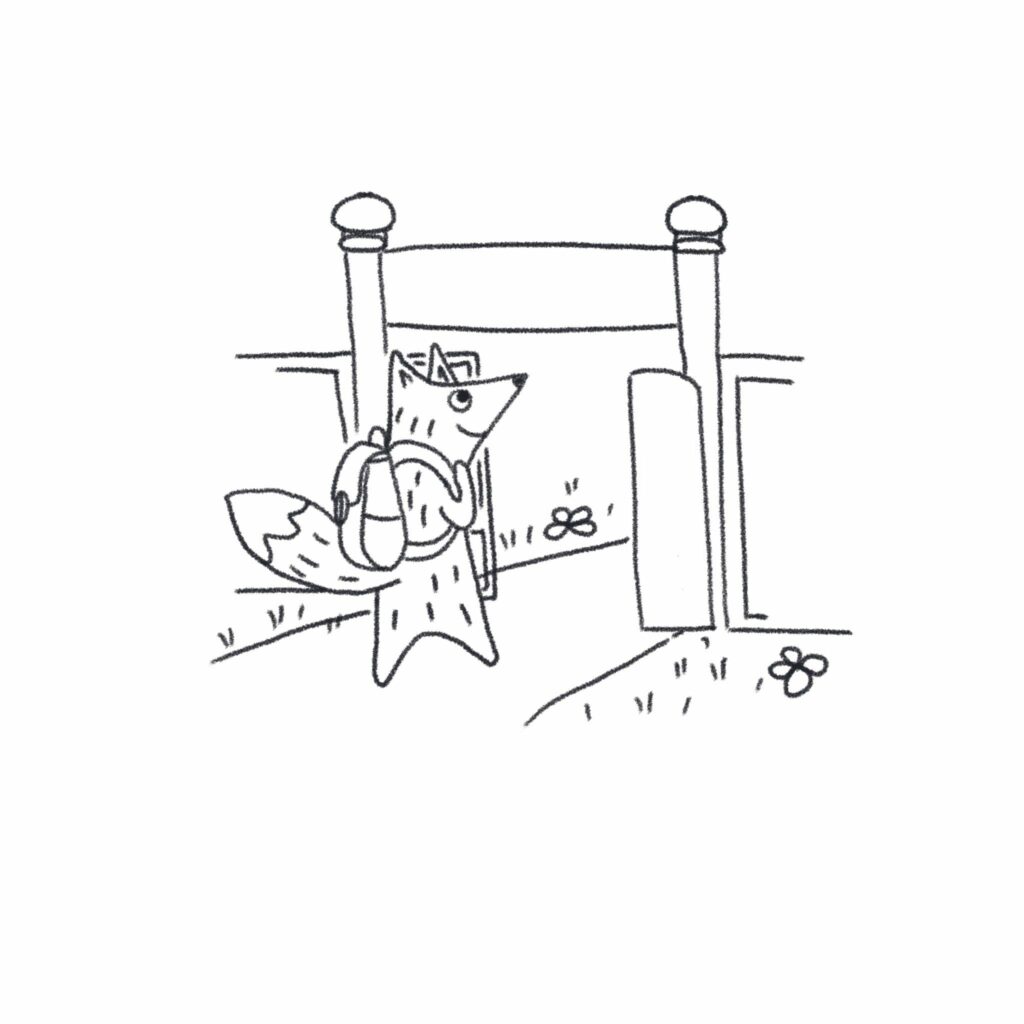“Every child is an artist. The problem is to remain one when we grow up.”
Pablo Picasso
Do you cheat when you do craft activities with your child?
Do you ‘fix’ mistakes and tidy up the messy bits?
How does your child feel about that?
When we embark on a festive, creative activity with our children, we are often consumed with producing something that is universally recognisable, accurate, aesthetically pleasing or that mirrors an example made by us. We set up the activities with carefully selected resources and we hold those little hands to ensure the prints and marks go in just the right places. We adorn their marks with our own, to really make sure the end product looks as it was intended to. Then, perhaps, we photograph and display the work on our social media platforms and in our homes, to show the world what those little hands can do. But was it truly those little hands? Or was it really our grown-up hands, that have lost the art of, well, art?


What about the children? Where do their own thoughts, skills, ideas and wonderings come into the process? At what point during the carefully planned and prepped activity, does the child become passive and disinterested? When they are visiting home in 30 years and they see the immaculate handprint Christmas wreath displayed proudly on the mantlepiece of their family home, are they looking at anything more than a physical indicator of how small their hands were when they were 4? Whilst there is a place for the odd hand or foot print picture, there are so many other wonderful crafts and activities that we can arrange for our children during the festive period, that allow them to play more freely, create more honestly and produce things that they are truly proud of.
The post ‘Down with Pinterest-friendly craft ideas!’ reminds us of the importance of open-ended resources and how this freedom to explore and create can really support children’s development in ways that recreating Pinterest products simply cannot. Activities that value the process over the end product, ensure that children are engaged, enthralled, immersed and excited throughout the task. By celebrating these creations, we are actively showing our children how much we love and are proud of their ideas and abilities, by investing in their unedited, honest art and sharing this openly with the most special people in their lives. After all, ‘Art has the role of helping children become like themselves instead of more like everyone else’ (Sydney Gurewitz Clemens).
Here are some simple, cost-effective and easy Christmas craft activities that you could carry out with your children:

Making Paper chains
You can buy pre-cut paper-chain strips – and for the youngest children this might be OK – but best of all is to make them from scratch. It’s hard to overstate how important cutting, sticking and glueing are for your child’s development. Using both hands together, or bilateral co-ordination, is an essential skill. One hand to hold the paper steady while the other uses the scissors or glue. There are other learning opportunities, too. You could count the chains as you go, measure the length needed or length achieved, therefore developing skills in maths and problem solving. And, best of all, have lots of fun.
Tip: Using those squares of shiny, gummed paper that we are all familiar with from school is an easy way to make paper chains, but you can get by equally well with plain white paper. Just rub the side of a crayon across the entire sheet on both sides and you have a unique material packed with home-made charm.

Paper snowflakes
I think we all remember making these at some point or another! Folding a paper circle into eighths (maths) and cutting small shapes into the sides (cutting, fine motor skills and hand/eye coordination) before opening it up to discover what pattern we have made. Children love the anticipation of finding out how their snowflake will look and will likely make adaptations to their cuts and snips each time they produce another one, therefore applying new knowledge to existing ideas and stretching them beyond their capabilities.

Tree decorations
Children can draw and design their decorations on card before cutting them out and decorating them with paints, environmentally friendly glitter, stickers, buttons or any other decorative items you may have to hand. Then, using PVA glue to stick them together, punch a hole and use a ribbon to hang them on the tree. There are so many skills involved with such a simple and easy activity such as applying the right amount of glue, positioning a hole in the right place, threading the ribbon through, selecting and using different decorations. Children love to let their creativity run wild with their choices in shape, design and decoration, and then they get to see their beautiful decoration on the family Christmas tree, which is a huge confidence booster because it is 100% their creation.


Salt dough decorations
Salt dough is a cheap and more readily available option than clay. It is easy to make, dries hard enough to paint/decorate and will last many years in the Christmas decorations storage box in the loft!


Using the salt dough recipe here, you can allow children to create their decoration shape, or use cutters and objects to make prints and patterns in circles or balls. Children can create the shape and then after baking the items with help from their adults, they can be painted and adorned with all manner of festive decorations. Conversations during modelling with dough or clay are wonderful! Lots of talk around texture and shape, ideas and stories. Children often change their ideas as they progress and talk you through what they are thinking.

Potato print wrapping paper
Buy a roll of drawing paper if possible as this works well with wrapping gifts as opposed to A4 (although that will work just as well for smaller gifts). Cut a potato in half and carve some shapes into the ends. The children can use these potato stampers to create patterns. They will naturally explore tessellation, pattern, grouping shapes, counting and concepts of space and measurement.

Pine cone decorating
There have been a lot of opportunities for being outdoors lately during walks and you may have stumbled upon some pine cones. Collect some pine cones and, using PVA glue, adorn these with splendid Christmassy things like environmentally friendly glitter, any craft items you may have in the home such as pom poms or stickers. Tie a ribbon or string to the top and make decorations to hang on the tree, or just for placing around the home.
Christmas card collage
Using old or unused cards and wrapping, alongside some safety scissors and glue, allow children to cut out shapes and pictures and create their own Christmas collage! They may wish to tell a story, catalogue things they like or simply create something decorative. This offers children the chance to cut around shapes and pictures, developing cutting skills.

Snowglobes
Using old jars, biodegradable glitter, glycerin and water (or baby oil if you do not have this) and some objects to stick inside the lid of the jar, children can make an effective snowglobe. This activity is very scientific in nature and there are opportunities for conversations about how and why things work the way they do such as how the water/oil stays in the jar, why the glitter moves more slowly or how the light reflects. Then, at the end, watch their eyes as the glittery snow falls down through the liquid.
Making Christmas stockings/sacks
Using an old bag for life, old clothing or fabric, socks, or some cardboard cut into the shape of a stocking, children can decorate with anything to hand (buttons, stickers, shapes, pom poms, photos). You could introduce sewing or fabric glue with older children and allow them to really let their hands get busy with new skills and thought processes.

Wrapping presents
At this time of year, we tend to have a lot of excess boxes from online deliveries and purchases. Children always seem to gravitate towards the good old fashioned cardboard box as it represents freedom to be anything they wish! They could wrap them, tie bows on them, make up presents for others, or just decorate them as Christmas props. Perhaps they want to turn one into a present costume or hat. The options are endless, but the process of creating the end result is going to involve a lot of different skills and ideas along the way.
Icing Christmas biscuits
This could can be as basic as taking an existing cookie or biscuit and simply icing it with a variety of sprinkles, or baking them together and then decorating in any way they choose. Mixing icing to the desired consistency, using it with different utensils (piping bag, spatula, spoon etc) and then waiting for it to set and be ready for eating, will support development in science, understanding of the world and the properties of various liquids and mixtures, patience, resourcefulness and consequence.
Christmas cards
Folding (maths, fine motor skills, hand/eye coordination), decorating (creativity, colours, confidence, expression), writing, sealing, sending. An oldie but a goodie! Children enjoy all of the stages of making cards and they can really feel a sense of pride when the card they took so much care in making, is sent to someone they love and care for.
Stained glass windows
These are fabulous! Using tissue paper and sugar paper or card, cut the frames out by folding and cutting shapes into whatever patterns the children choose. Stick the tissue paper over the spaces created and then stick to the window. Children can really play with colours, shapes and experience the illusions shadows and silhouettes can make. Children may need a sample to help them with the initial concept, however this shouldn’t be something they are expected to copy, but rather an example to inspire and guide them. Christmas is a great time to do these activities because shapes such as stars, Christmas trees and snowflakes are familiar, recognisable and easy for children to cut out, if they choose to.
Junk modelling
Christmas often accumulates a lot of waste packaging. You could provide your children with a crate or bag of boxes, wrapping paper, cardboard inserts, plastic pots/bottles, tags, sweet wrappers, packaging fillers such as shredded cardboard or polystyrene. Along with some glue, scissors, decorative papers, pens/crayons to construct and decorate, let the children model something. Junk modelling is a wonderful way of supporting children’s problem solving skills by posing different opportunities to solve problems (why won’t the cylindrical tub stick to the cardboard box? Could I do anything differently to make that work?). It also supports their gross motor skills such as lifting, reaching and stretching, as the objects are bigger and more difficult to manoeuvre than small, tabletop items.
Read more about junk modelling.
Final word
In all of these suggested activities you will find opportunity to explore every area of development. There are chances to introduce new vocabulary, extend existing ideas by asking questions, model your own thinking by talking out loud about what you are doing or how you could approach something differently. There are opportunities to develop maths by using mathematical language (is this big enough? How many will we need? Are there more or less here?), counting, measuring and estimating. Science is introduced with mixing, experimenting, hypothesising (I think I will be able to do this because…). You can encourage children to express how they feel, articulate their thoughts and ideas. You can help them to develop physical skills from both large scale movements to small fingertip work. Children will engage in highly focused, deep play, that is powered by their own ideas and motivation, thus empowering them and their ideas. The end product may not be a perfectly replicated Pinterest reindeer, but it will be something your child has enjoyed making and is pleased as punch with in the end.





